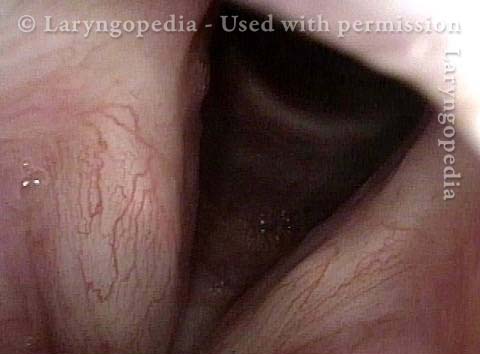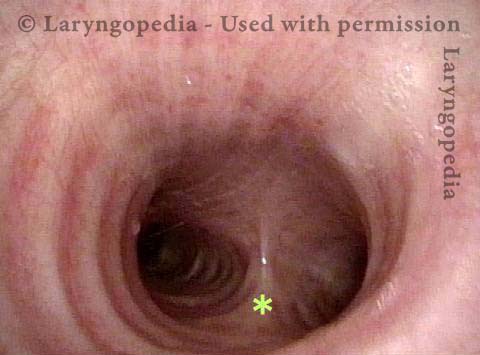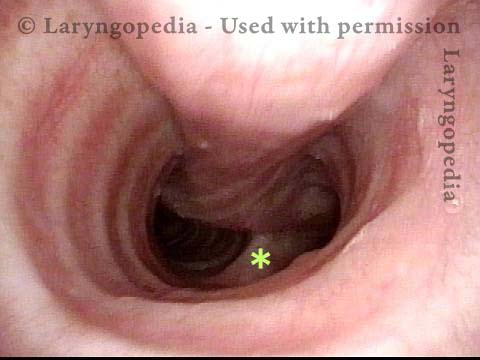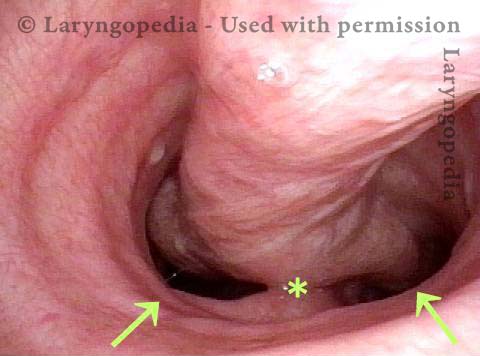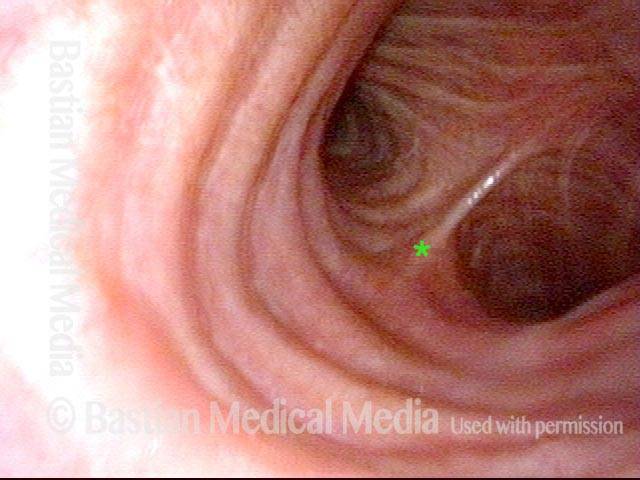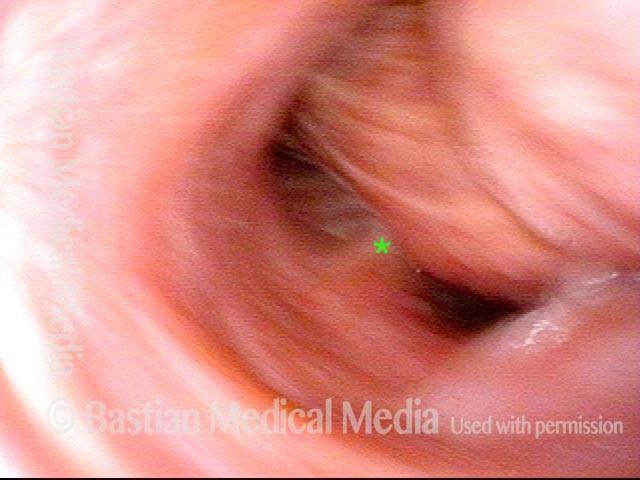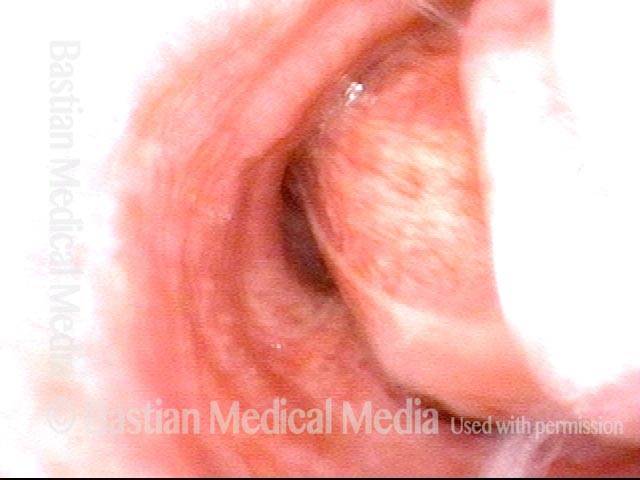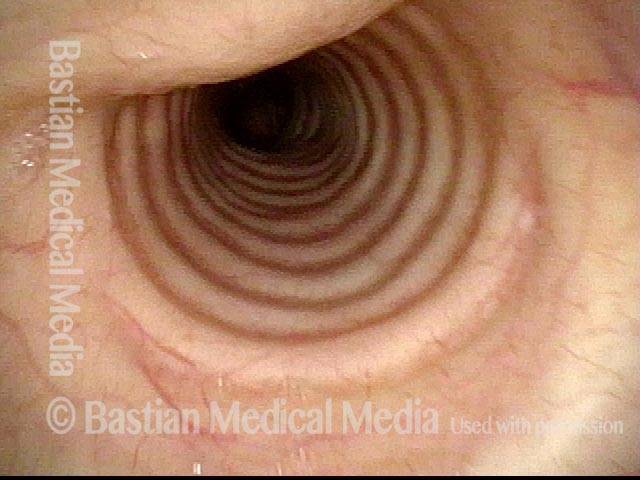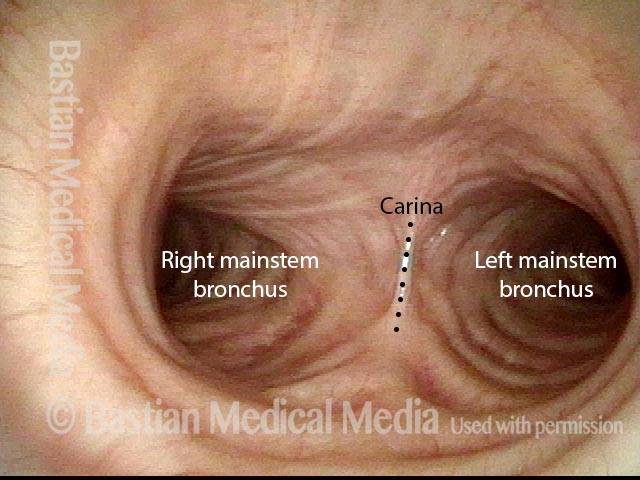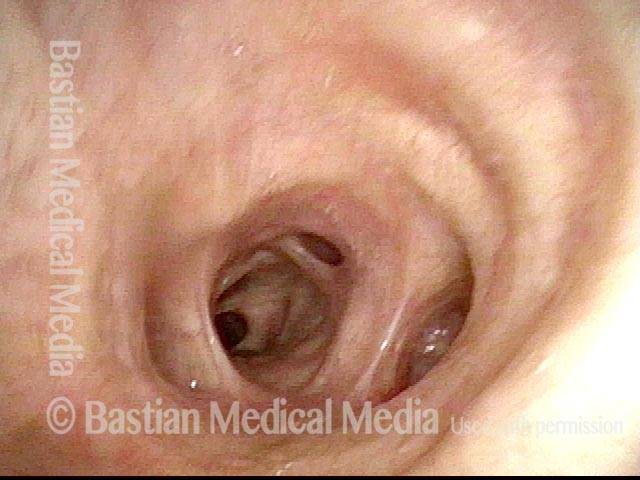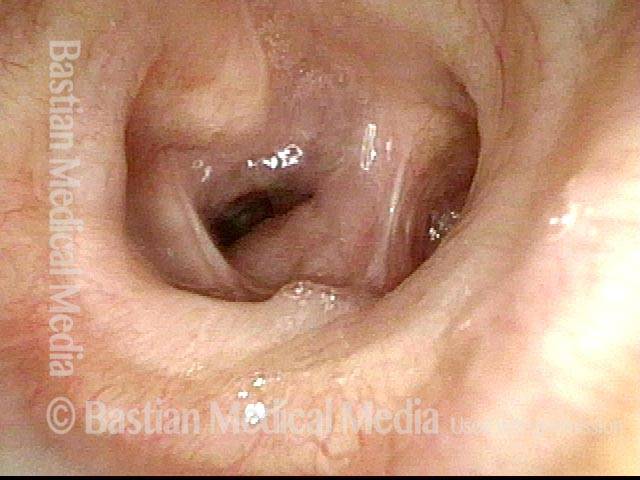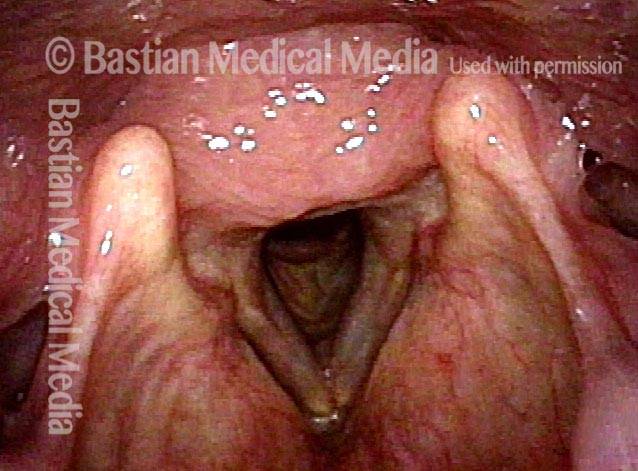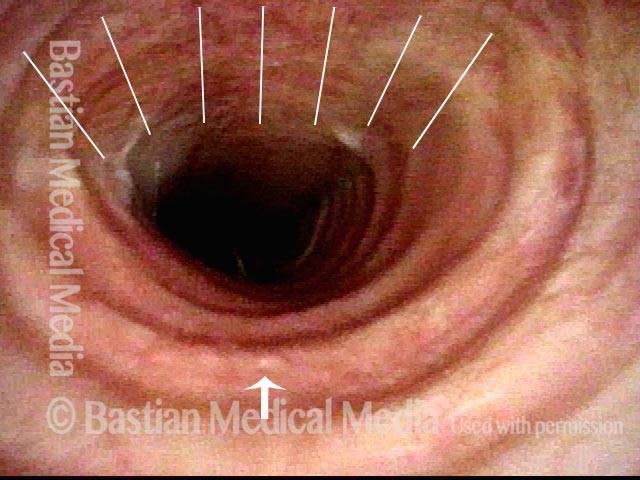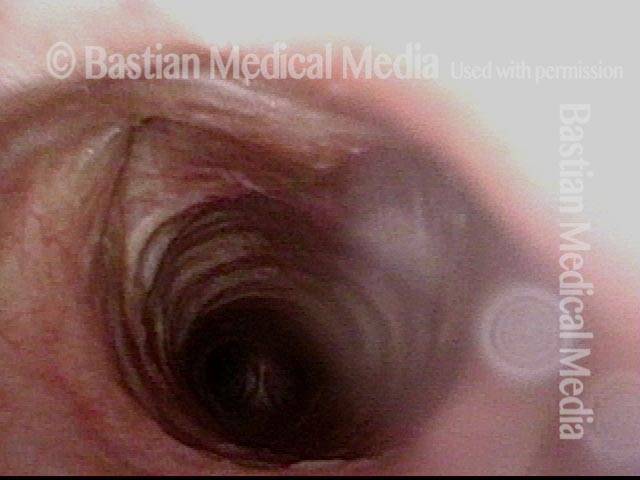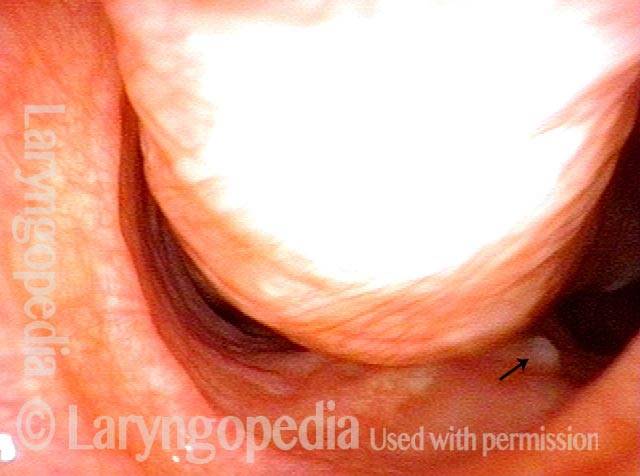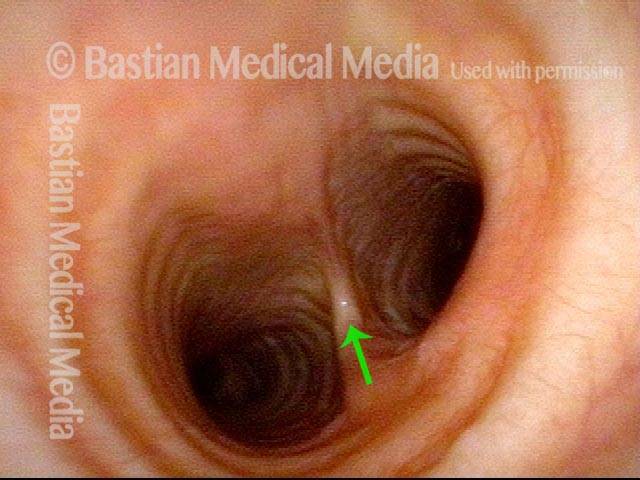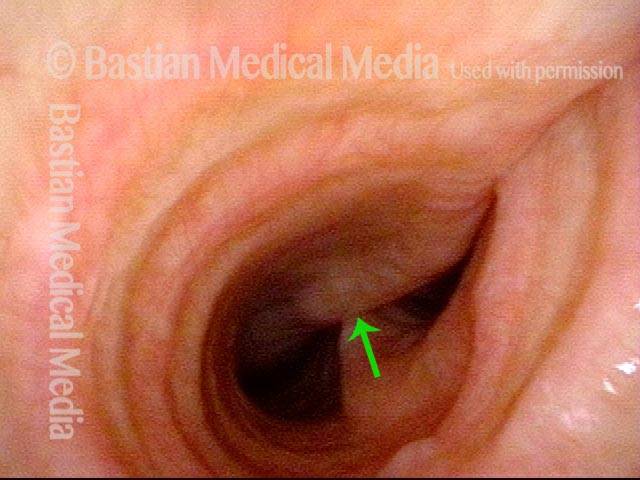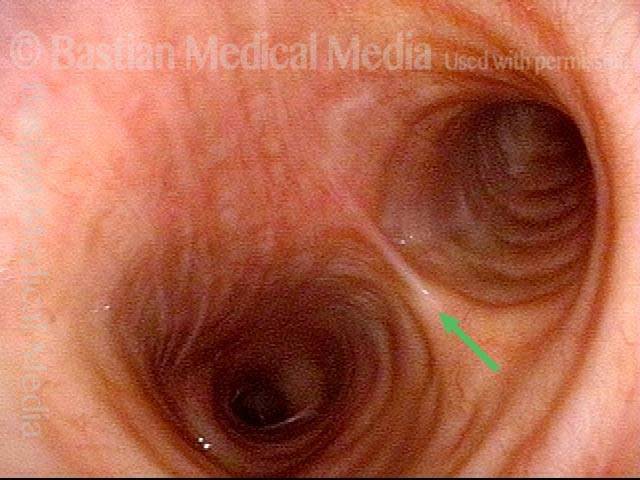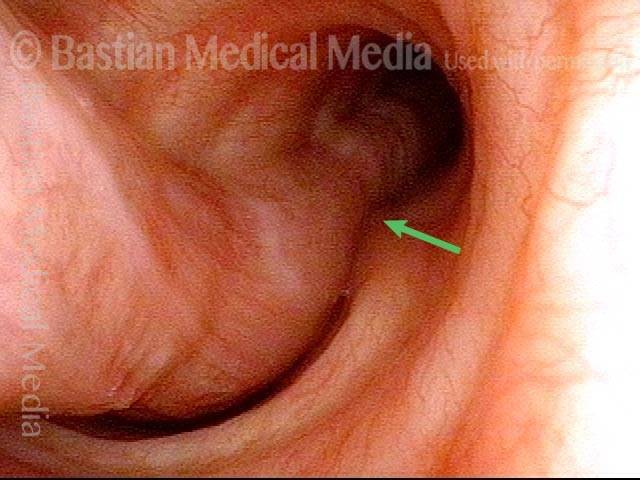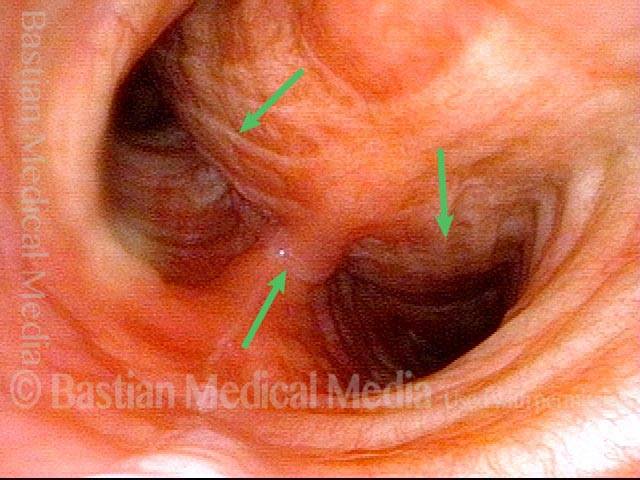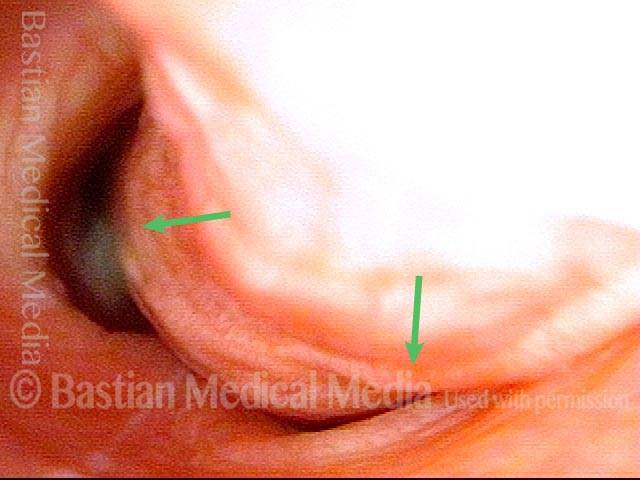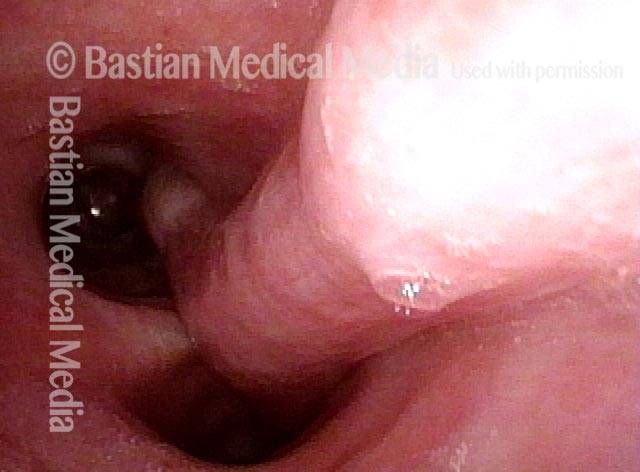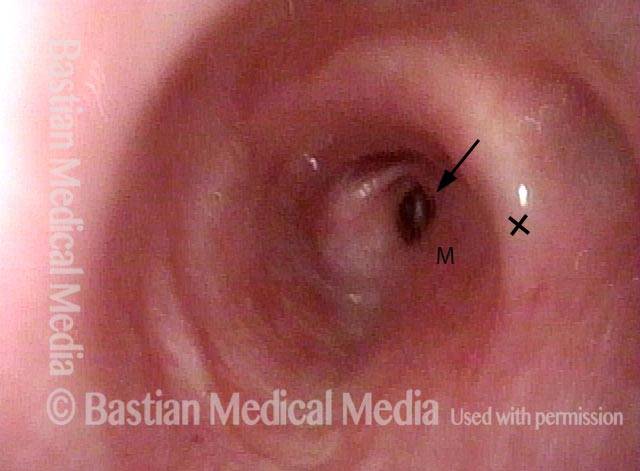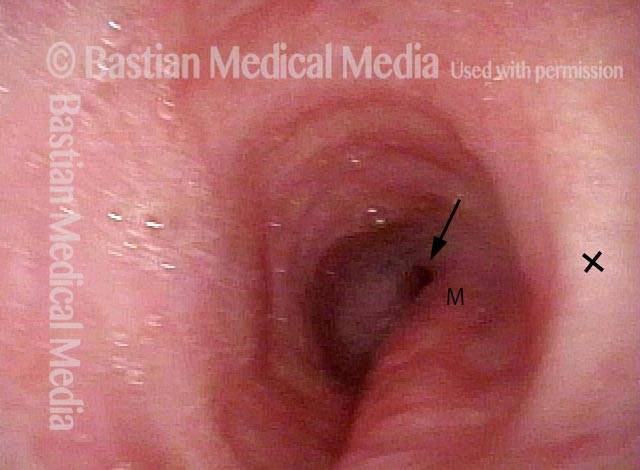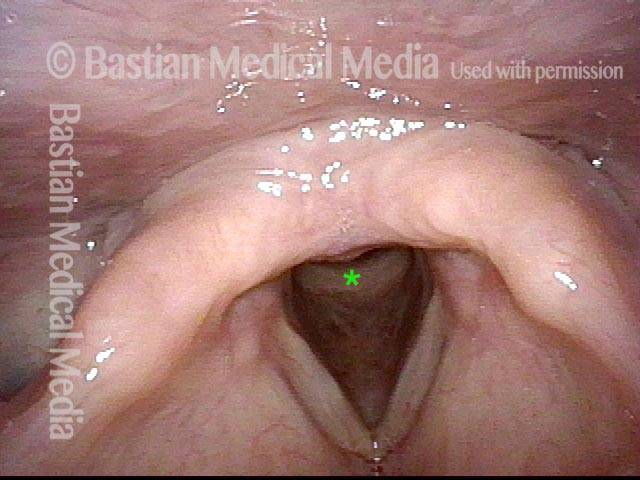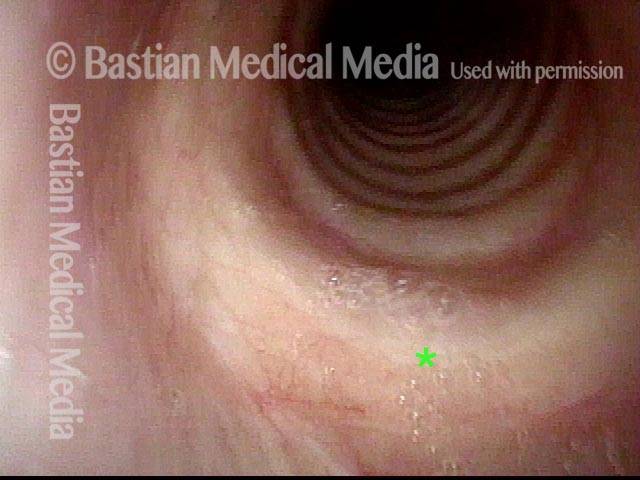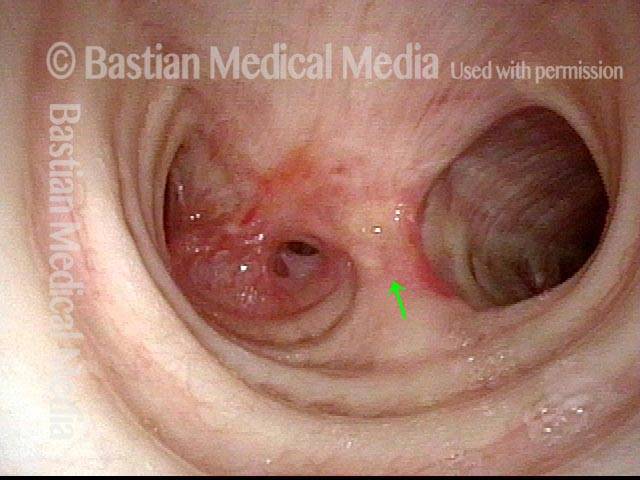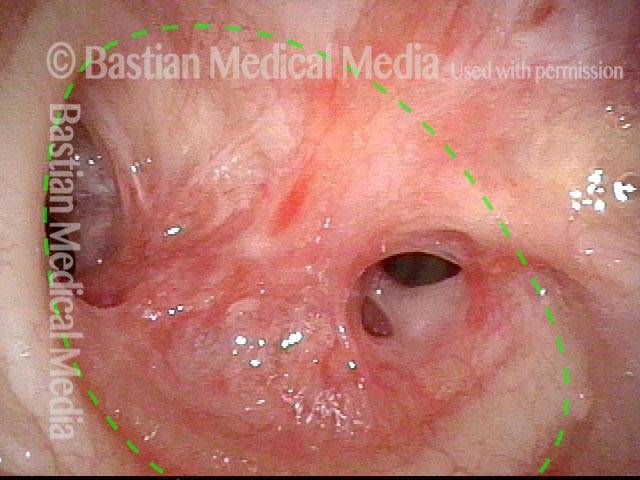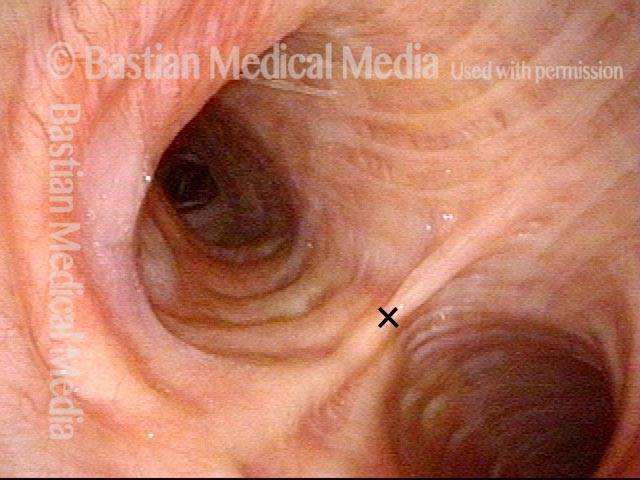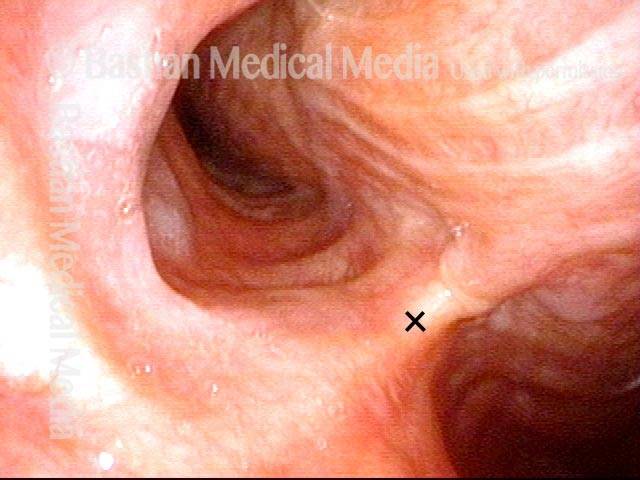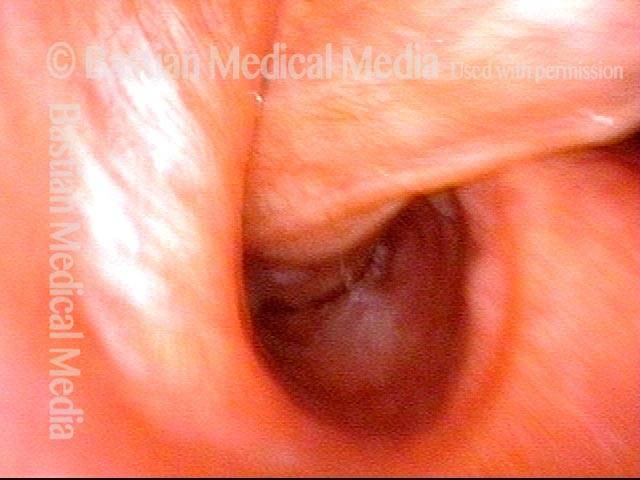Upper Airway Wheezing
Upper airway wheezing is expiratory wheezing caused by the narrowing of a person’s trachea and, possibly, mainstem bronchi. As expiratory air rushes out through the narrowed trachea or mainstem bronchi, the wheezing sound is created.
4 Possible Causes
This tracheal narrowing and its accompanying wheezing can occur in a variety of circumstances or scenarios. In the case of tracheomalacia, a person’s trachea is unusually flaccid and fails to stay open at its normal diameter [photo example].
In other cases, there is no anatomical or physiological disorder of the person’s trachea, but the person is able, with a sort of semi-Valsalva maneuver, to flex inward the membranous tracheal wall and decrease the caliber of the “pipe” [photo example].
Think, for example, of a “wheezy laugh.” This ability may have no particular significance to the person’s life, but in certain cases, a person may use an unusual degree of this wheezing ability to masquerade (perhaps sub-consciously) as having asthma: we call this nonorganic breathing disorder, tracheal [photo examples].
Finally, there are also cases in which a person who is grossly obese is susceptible to this momentary tracheal narrowing or collapse, because the added weight on the abdomen puts a kind of constant upward pressure on the diaphragm and serves as a kind of constant mild Valsalva [photo example].
